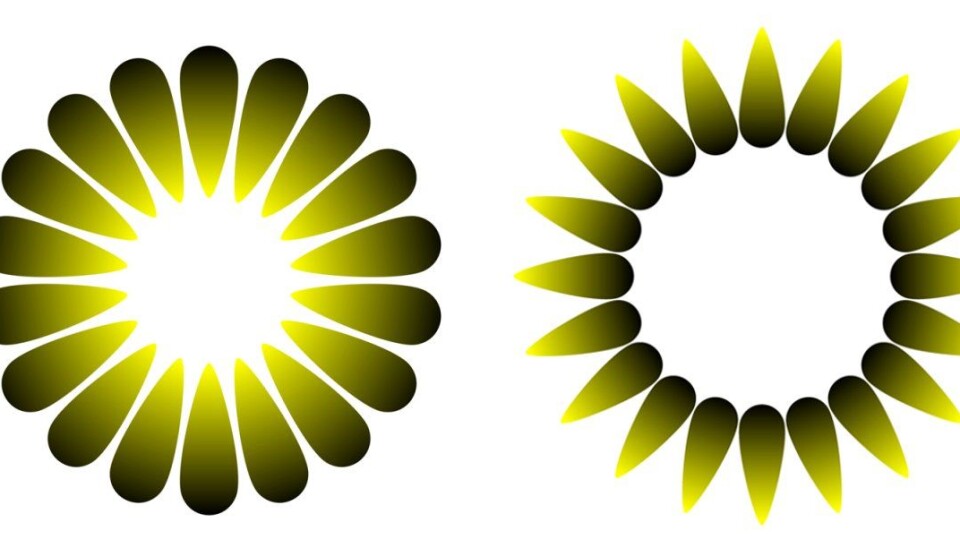
The illusion of light constricts pupils
Which of the figures below is brightest in the middle? Maybe when your brain plays tricks on you it isn’t a mistake, but rather a sort of improvement on reality.
Denne artikkelen er over ti år gammel og kan inneholde utdatert informasjon.
It’s an old philosophical question: when you walk down the street, seeing, smelling, hearing and feeling the environment around you – to what degree are you experiencing reality as it is?
Animals’ and humans’ abilities to sense themselves and their environment have developed in the course of over a billion years of evolution. Still, sometimes it seems as if our brain is fooling us.
Illusions are a poignant example. In the picture above you see two forms put together from identical pieces. One of the forms seems to have a glowing centre. In the other the centre appears dimmer.
In reality the middle sectors of both are equally light. Our brain interprets it otherwise. It’s an optical illusion.
Pupil narrows
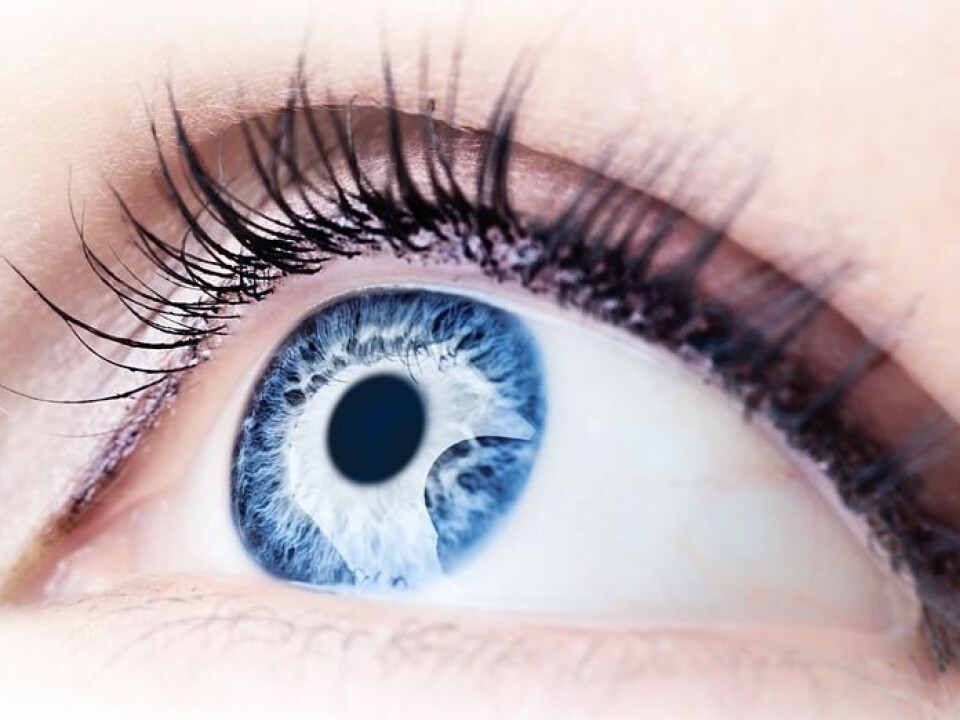
Norwegian researchers have documented that our pupils actually constrict when we look at the apparently brighter object, as compared to when we look at the other.
The pupillary constriction occurs very quickly – in the course of 100-200 milliseconds. The timing was made directly with an infrared video camera.
Previously it was believed that such pupillary constrictions can only be triggered by stimuli from increased luminosity – as a pure reflex action – to prevent the retina from being damaged.
The consensus was that this reflex was triggered by a small number of nerve cells in lower brain structures and that no higher brain structures were involved.
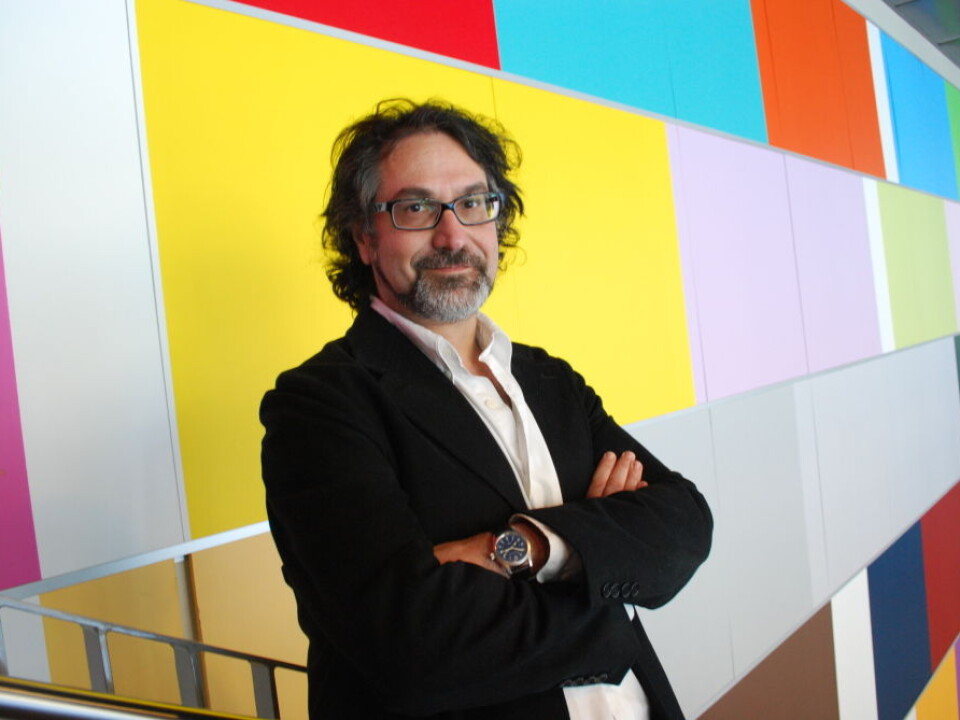
A parallel would be the way your body reacts when you burn your finger. Your hand jerks away reflexively before you’ve even felt the heat and pain.
This happens fast because the signals from the nerves in your finger don’t go first to your brain. They go to your spinal cord where a return message gets your hand to jerk away.
Higher brain function
Pupillary constrictions have been understood as a similar automatic reflex. The new results show this isn’t true. The discovery has an impact on our understanding of the way the brain handles our experience of the environment.
“Our pupils contract when we see illusory light. This is odd, because no extra light is striking the retina,” says Tor Endestad, associate professor at the Department of Psychology and Center for the Study of Human Cognition at the University of Oslo (UiO).
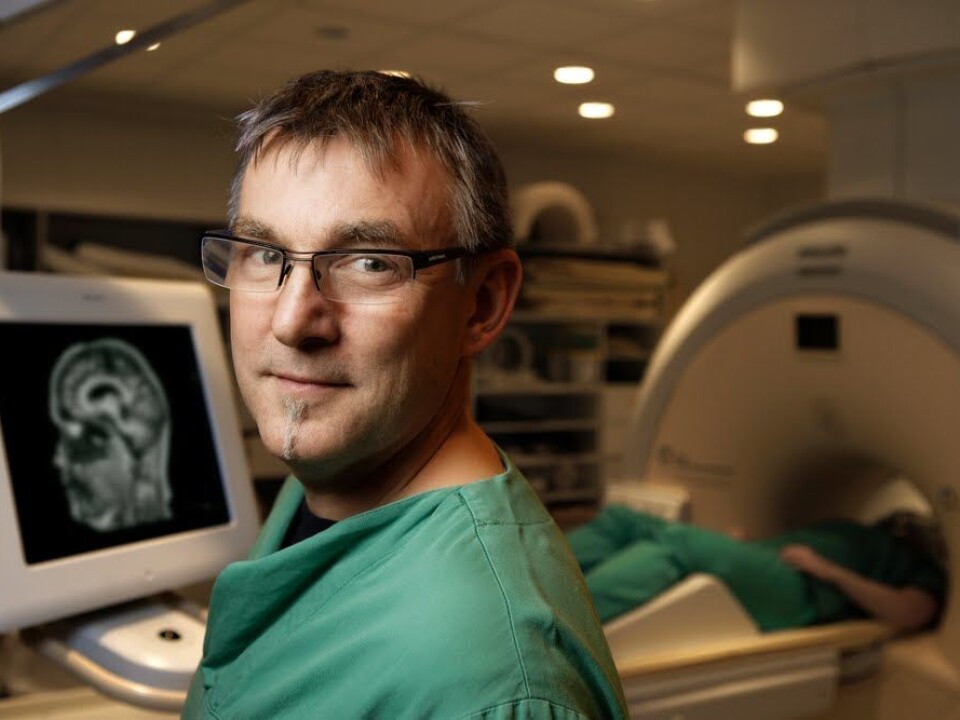
So our pupils react almost instantly to what we think we see, rather than what we really see. This indicates the involvement of a higher brain function. The brain’s interpretation of the world is the basis for the extremely rapid shrinking of our pupils when illusory light is seen.
“This upends our thoughts about perception errors. We used to think of them as evolutionary side-tracks. Now we view them as adaptations and learned phenomena,” says Endestad.
Supposed inaccuracies in the sensory instruments that evolution has equipped us with could actually have evolved to make us more adept at encountering our environment.
Better than reality
“Maybe what we see is better than reality. We construct partly illusory perceptions that help us function better and more precisely,” says Endestad.
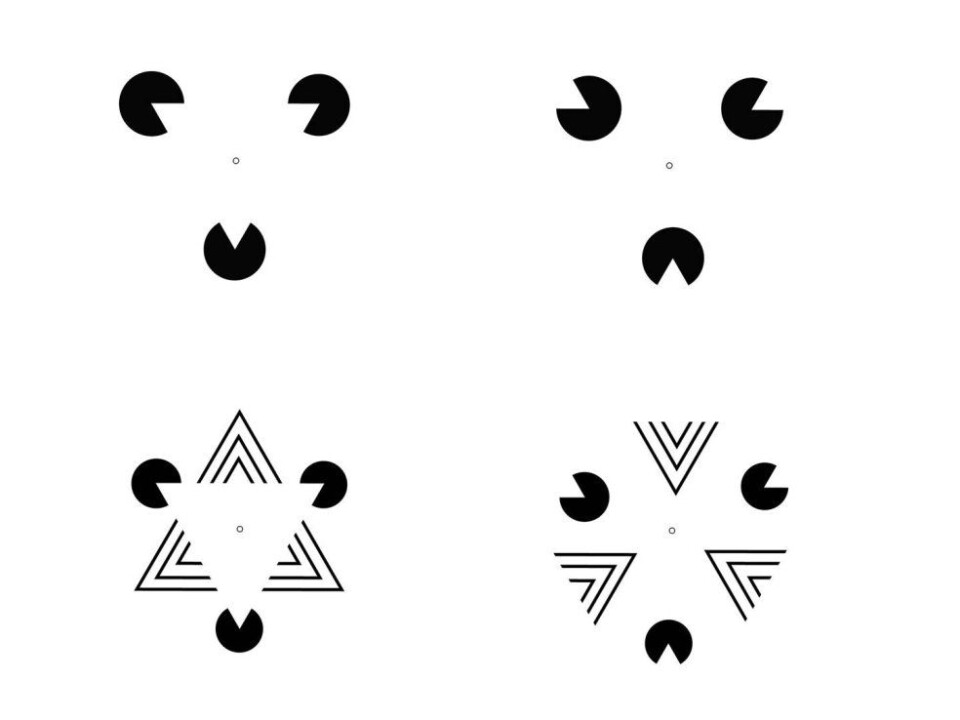
“I agree,” says the first author of the study, Professor Bruno Laeng, who also works at UiO’s Department of Psychology and Center for the Study of Human Cognition.
The research has been published in the journal PNAS and has been making the rounds in several international publications.
Laeng thinks the illusory light and the pupillary constriction have evolved to protect the eye.
“The function is to protect the retina. If the brain perceives that strong light could come from the something in the environment, it makes rapid preparations. It’s a precaution against something that might occur,” he says.
New theory
Other illusions can have other functions.
“It’s conceivable that various light phenomena help us see details in our surroundings much better,” says Endestad.
“Many illusions reflect the best interpretation we have of visual information. Visual information is essentially really ambivalent. The same picture can mean so many things,” says Laeng.
The two researchers think the discovery can contribute to the development of a new theory about how humans function in visual contexts.
“Here the eye is responding to how we think the world looks, and not just the amount of light energy that is streaming through the pupil,” says Laeng.
“This means our sensory organs and the brain interact much more than we believed. This has consequences for physiological and neurological science,” he says.
Construction of meanings
In many fields of research our understanding of humans as constructive beings has become increasingly important. For example this applies to research on memory − how we arrive at decisions and how we perceive ourselves.
“The constructivist principle is essential for understanding how we work," says Endestad. "It is something other than a one-to-one correspondence between physical phenomena and mental representations of them.”
Endestad believes the study of the pupils shows the way our brain’s interpretation of reality is essential to how we automatically react to our surroundings.
“Nobody can voluntarily control their pupils, so what we have here is a fascinating link between something highly automatic and something which is obviously interpretive. This says a lot about how humans work,” says Endestad.
For Laeng this discovery supports philosophical approaches which stress that the brain isn’t giving us a reflection of the world, but rather a complex interpretive reconstruction of it.
“This must obviously function well, otherwise we couldn’t be sitting here talking and philosophising. But it’s contrary to the notion that what we experience is a direct representation of the surroundings,” he says.
The two researchers are now rolling up their shirtsleeves to try and find the explanation for what causes the pupils’ reaction to illusory light. Their plan is to take the study to the next step using techniques that reflect brain activity, for instance functional magnetic resonance imaging (fMRI).
--------------------------------------------------------------------------
Read the article in Norwegian at forskning.no
Translated by: Glenn Ostling
Scientific links
- Bruno Laeng and Tor Endestad; Bright illusions reduce the eye's pupil; PNAS; 23 January 2012; doi: 10.1073/pnas.1118298109.(Abstract)
- Akiyoshi Kitaoka: Akiyoshi's illusion pages
External links
- Science: Brightness Is in the Eye of the Beholder
- New Scientist: Pupils constrict at the thought of brightness
- Bruno Laeng's homepage at the University of Oslo
- Tor Endestad's homepage at the University of Oslo































